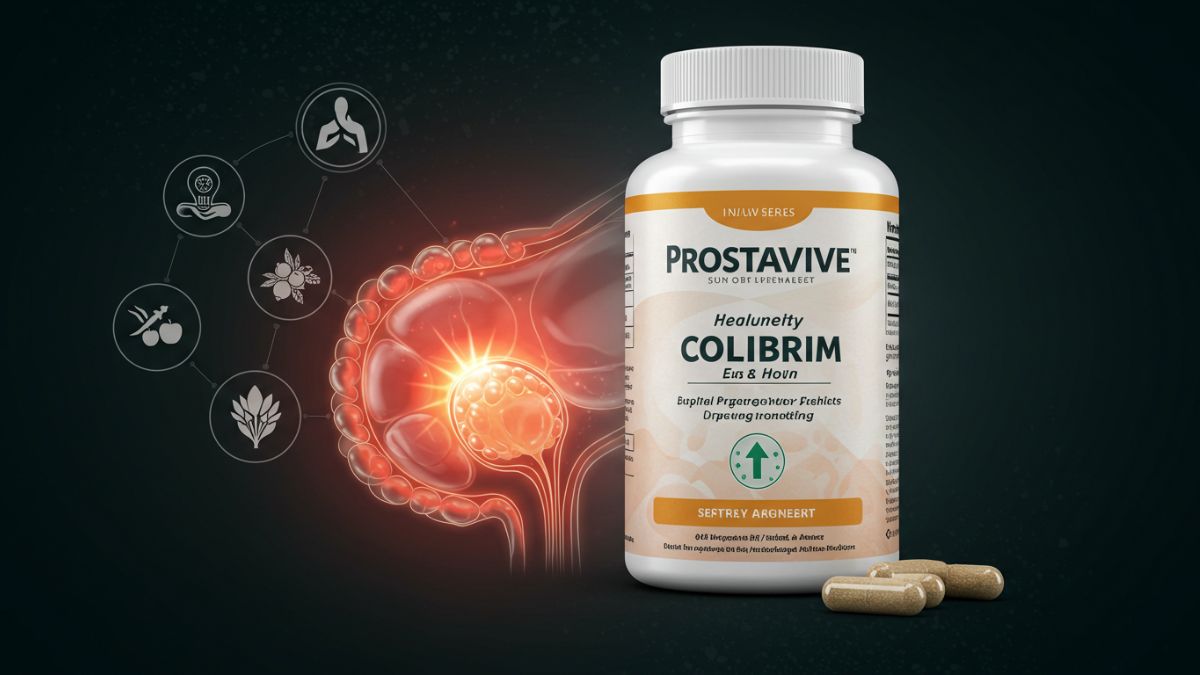HEALTH
isbe child health exam and immunization dates 2024-2025

HEALTH
A Comprehensive Guide to tcb scans: Benefits and Applications

In the ever-evolving landscape of medical technology, tcb scans are making waves. These advanced imaging techniques are revolutionizing how healthcare professionals diagnose and treat various conditions. But what exactly are TCB scanss, and why should you care? Whether you’re a patient curious about your options or a healthcare professional eager to stay updated on innovative solutions, this guide will unpack everything you need to know about TCB scanss. From their remarkable benefits to real-world applications in healthcare settings, let’s dive deep into the world of TCB scanss and uncover their potential impact on medical diagnostics.
Benefits of TCB Scans
TCB scans offer numerous advantages in the realm of medical imaging. They provide high-resolution images, enabling healthcare professionals to detect conditions with remarkable precision. This clarity helps in making early diagnoses, which can significantly improve patient outcomes.
Another key benefit is their speed. TCB scanss are generally quicker than traditional imaging methods, reducing wait times for patients and allowing for more efficient use of hospital resources.
Additionally, these scans often require lower doses of radiation compared to conventional techniques. This aspect enhances patient safety while maintaining image quality.
Moreover, TCB scanss are non-invasive and comfortable for patients. The process typically requires minimal preparation, making it accessible and convenient for a wide range of individuals.
The versatility of TCB scanss also stands out; they can be applied across various specialties such as oncology, cardiology, and neurology. This broad application makes them an essential tool in modern medicine.
Applications of TCB Scans in Healthcare
TCB scans are revolutionizing the way healthcare professionals diagnose and monitor various conditions. Their ability to provide detailed images at a cellular level enhances precision in identifying tumors, infections, and other abnormalities.
These scans play a crucial role in oncology. They help doctors assess tumor size and response to treatment effectively. This real-time data allows for adjustments in therapy, leading to better patient outcomes.
In cardiology, TCB scanss offer insights into heart function and blood flow. Physicians can identify blockages or irregularities that may lead to serious cardiovascular events.
Beyond diagnosis, TCB technology aids in surgical planning. Surgeons use these detailed images to strategize operations with increased accuracy, minimizing risks during procedures.
Additionally, TCB scans contribute significantly to research advancements by providing reliable imaging necessary for clinical trials. This promotes innovation in treatments across various medical fields.
Differences between TCB Scans and Other Imaging Techniques
TCB scans stand out in the realm of medical imaging due to their unique approach. Unlike traditional X-rays, which provide only flat images, TCB scans generate three-dimensional data. This allows healthcare professionals to visualize structures with remarkable depth and clarity.
When compared to MRIs, TCB scanss typically offer faster results. Patients often prefer this speed for urgent diagnoses without sacrificing image quality. The technology used also minimizes exposure to radiation, making it a safer choice than CT scans.
Another notable difference lies in cost-effectiveness. TCB scanning procedures tend to be more affordable while still delivering high-resolution images essential for accurate diagnostics.
Each imaging technique has its place within healthcare. However, the advantages of TCB scanss make them an appealing option for many clinical situations.
Conclusion:
TCB scans represent a significant advancement in medical imaging technology. Their ability to provide detailed insights into the human body is reshaping diagnosis and treatment plans.
Healthcare providers are increasingly relying on TCB scanss for their precision and efficiency. This method helps uncover issues that might elude other imaging techniques, ensuring patients receive timely interventions.
As research continues, the potential applications of TCB scanss will likely expand further. Innovations may lead to improved scanning processes or even entirely new uses within various medical fields.
FAQ’S
What are TCB scans used for?
TCB scans are primarily utilized in healthcare settings for advanced imaging purposes. They provide detailed insights into various medical conditions, aiding in diagnosis and treatment planning.
How do TCB scans work?
TCB scans work by utilizing specific technology that captures images of the body’s internal structures. This process involves specialized equipment to ensure high-resolution results.
Are there any risks associated with TCB scans?
Like all imaging techniques, there may be minimal risks involved, particularly concerning radiation exposure. It’s essential to discuss these concerns with a healthcare professional beforehand.
HEALTH
The Science Behind prostavive colibrim: How It Works for Your Health

When it comes to maintaining optimal health, particularly for prostate wellness, choosing the right supplement can be instrumental. Prostavive Colibrim has quickly gained popularity in the health and wellness industry as a highly effective supplement for prostate support. But what exactly makes Prostavive Colibrims work so well? This blog breaks down the core science behind Prostavive Colibrims and explains how its formula is designed to support your health.
By the end of this article, you’ll understand the key ingredients, the health benefits they provide, and why Prostavive Colibrims stands out as a trusted option for anyone looking to improve their prostate health.
Understanding Prostate Health and Why It Matters
Prostate health often goes overlooked until issues arise, but taking proactive measures is essential for long-term health. The prostate, a small gland located below the bladder, plays a vital role in producing and regulating seminal fluid. However, with age, many men face problems such as inflammation, enlarged prostate (also called benign prostatic hyperplasia, or BPH), or even prostate cancer.
Common symptoms of poor prostate health include:
- Frequent urination, especially at night
- Difficulty starting or stopping urine flow
- Pain or discomfort in the pelvic region
Supporting prostate health with dietary supplements like Prostavive Colibrims can significantly reduce the risks of these problems and improve overall quality of life.
What Is Prostavive Colibrim?
Prostavive Colibrim is a scientifically formulated health supplement designed to support prostate health naturally. This supplement is packed with powerful, research-backed ingredients that promote healthy inflammation response, improve urinary function, and support hormonal balance.
Unlike conventional treatments, Prostavive Colibrims is non-invasive and works by targeting the root causes of prostate issues rather than just addressing symptoms.
Key Ingredients in Prostavive Colibrim and How They Work
The science behind Prostavive Colibrim lies in its expertly selected ingredients. Each component in the formula offers unique benefits that contribute to overall prostate wellness.
1. Saw Palmetto Extract
Widely regarded as one of the most effective natural remedies for prostate health, saw palmetto extract is a staple in Prostavive Colibrims. Studies have shown that saw palmetto can reduce symptoms of BPH by inhibiting the enzyme 5-alpha-reductase, which converts testosterone into dihydrotestosterone (DHT). Excessive DHT levels are a leading cause of prostate enlargement.
2. Beta-Sitosterol
Beta-sitosterol is a plant-derived compound known for its anti-inflammatory and cholesterol-lowering properties. When it comes to prostate health, beta-sitosterol improves urinary flow and reduces the need for frequent nighttime urination by supporting healthy prostate function.
3. Zinc
Zinc is an essential mineral that plays a crucial role in maintaining hormonal balance and immune function. Research indicates that adequate zinc levels help regulate prostate cell growth and reduce the risk of developing prostate-related conditions.
4. Pomegranate Extract
Rich in antioxidants and anti-inflammatory compounds, pomegranate extract supports healthy inflammation response in the prostate. This ingredient not only reduces swelling but also increases blood circulation, enhancing nutrient delivery to the prostate gland.
5. Vitamin D
Vitamin D is essential for maintaining hormonal balance and immune health. Additionally, it has been linked to reduced risk of prostate cancer and the improvement of symptoms in men with BPH.
6. Green Tea Extract
Green tea extract is loaded with catechins—antioxidant compounds that protect prostate cells from oxidative stress. Catechins may also slow the progression of prostate cell abnormalities and improve overall prostate wellness.
7. Pygeum Bark Extract
Derived from the bark of the African cherry tree, pygeum extract is a well-documented natural remedy for urinary problems associated with an enlarged prostate. It reduces inflammation, improves bladder emptying, and enhances urinary flow, making it a powerful addition to Prostavive Colibrims formula.
The Benefits of Prostavive Colibrim for Prostate Health
The carefully chosen ingredients in Prostavive Colibrim work synergistically to deliver targeted benefits for prostate health. These benefits include:
1. Reduced Prostate Enlargement
The inclusion of saw palmetto and beta-sitosterol helps regulate hormone activity, reducing the likelihood of prostate enlargement and the symptoms associated with BPH.
2. Improved Urinary Function
Prostavive Colibrim’s formula addresses urinary symptoms, such as frequent urination and weak flow, by supporting bladder health and promoting efficient urine elimination.
3. Anti-inflammatory Support
Chronic inflammation plays a significant role in prostate conditions. With ingredients like pomegranate extract and pygeum bark, Prostavive Colibrim helps alleviate inflammation and protect against future issues.
4. Balanced Hormones
By regulating hormones like testosterone and DHT, Prostavive Colibrim minimizes hormone-driven prostate issues. This balance also positively impacts energy levels and overall well-being.
5. Antioxidant Protection
Ingredients such as green tea extract and vitamin D deliver powerful antioxidant support to protect prostate cells from oxidative stress, which can lead to cellular damage over time.
6. Convenient and Safe
Prostavive Colibrim is a safe, natural supplement designed for long-term use. Its easy-to-take form ensures it fits seamlessly into your daily routine.
Why Choose Prostavive Colibrim?
With so many prostate supplements on the market, you may wonder what makes Prostavive Colibrim stand out. Here are a few reasons why it’s a trusted choice for men worldwide:
- Scientifically Backed Formula: Every ingredient in Prostavive Colibrim is chosen based on rigorous scientific research to ensure maximum effectiveness.
- Comprehensive Benefits: Unlike other supplements that only target one aspect of prostate health, Prostavive Colibrim delivers benefits across the board—from reducing inflammation to improving urinary function.
- High-Quality Ingredients: Prostavive Colibrim uses premium, natural ingredients sourced from trusted suppliers to guarantee purity and potency.
- Transparency: Each ingredient and its purpose are clearly listed, so you know exactly what you’re putting into your body.
- Proven Track Record: Thousands of men have reported improved prostate health and overall quality of life after incorporating Prostavive Colibrim into their routine.
Take Charge of Your Health Today!
Prostate health is too important to leave to chance. By choosing Prostavive Colibrim, you’re making an informed decision to support your body with natural, science-backed solutions. Whether you’re looking to prevent issues or alleviate existing symptoms, this supplement is a reliable ally in your health journey.
Conclusion
Your health is one of your most valuable assets, and Prostavive Colibrim is here to help you protect it. With its natural ingredients, scientific backing, and a proven history of improving prostate health, this supplement offers an effective, trustworthy solution. Don’t wait until symptoms disrupt your life—take proactive steps today to support your prostate health and overall well-being. Choose Prostavive Colibrim and take control of your health for a better, brighter future.
FAQ’s
What is Prostavive Colibrim?
Prostavive Colibrim is a natural supplement specifically designed to support prostate health. It is formulated with scientifically-backed ingredients that work to promote urinary function, reduce inflammation, and enhance overall well-being.
Who can benefit from Prostavive Colibrim?
This supplement is ideal for men experiencing prostate health concerns, such as frequent urination or discomfort, as well as those looking to proactively maintain their prostate health as they age.
How should I use Prostavive Colibrim?
For best results, take the recommended dosage as directed on the product packaging. Consistency is key, so make it part of your daily routine to ensure maximum benefits.
Are there any side effects?
Prostavive Colibrim is made from natural, high-quality ingredients and is generally well-tolerated. However, as with any supplement, it is recommended to consult your healthcare provider before starting, especially if you have underlying health conditions or take medications.
HEALTH
The Hype Around ceylan eye cream reviews Does It Live Up to the Promise?

Among the many options, ceylan eye cream reviews has been gaining notable attention. Touted as a luxurious yet effective skincare solution, it promises radiant, youthful-looking eyes. But does it deliver?
Here, we’ll provide a detailed and professional review of Ceylan Eye Cream, dissecting its key features, ingredients, benefits, customer feedback, and whether it earns a place in your skincare routine.
What Makes ceylan eye cream reviews Stand Out?
A High-Performance Formula Backed by Science
Ceylan Eye Cream claims to be more than your average skincare product. According to the brand, this cream combines cutting-edge dermatological research with powerful natural ingredients, specifically designed to target the delicate under-eye area. The product markets itself as an anti-aging multitasker, addressing dark circles, puffiness, and fine lines all in one.
Some standout promises of Ceylan Eye Cream include:
- Quick Absorption: Its lightweight formula is designed to penetrate the skin rapidly without leaving a greasy residue.
- 24-hour Hydration: Long-lasting hydration keeps the under-eye area plump and fresh-looking.
- Suitable for All Skin Types: Dermatologist-tested to ensure it’s gentle, even for sensitive skin.
With these claims, Ceylan Eye Cream positions itself as a versatile, effective addition to anyone’s skincare arsenal.
A Look Inside the Ingredient List
The efficacy of any skincare product largely depends on its ingredients. Here are some of the active components in Ceylan Eye Cream that stand out.
1. Hyaluronic Acid
Known for its ability to hold 1,000 times its weight in water, hyaluronic acid keeps the skin hydrated and prevents dryness. This helps maintain the plump, youthful look that consumers often desire.
2. Vitamin C
Packed with antioxidants, vitamin C works to brighten under-eye darkness by neutralizing free radicals and promoting collagen production. It tackles hyperpigmentation and gives your eyes a fresh, brightened appearance.
3. Peptides
Peptides are small chains of amino acids essential for rebuilding collagen and elastin. These help in smoothing fine lines and wrinkles around the eyes.
4. Green Tea Extract
Known for its soothing and anti-inflammatory properties, green tea extract reduces puffiness by calming irritated skin and reducing swelling.
5. Caffeine
Caffeine is a popular ingredient in eye creams, and for good reason. It constricts blood vessels around the eyes, effectively reducing puffiness and minimizing dark circles.
This combination of scientifically backed ingredients makes Ceylan Eye Cream a strong contender for those seeking a targeted under-eye treatment.
Benefits of Using Ceylan Eye Cream
What can you expect when using Ceylan Eye Cream? Based on customer reviews and dermatologist insights, here are the key benefits noted by users:
- Reduction in Dark Circles
Regular use has been reported to visibly lighten dark pigmentation under the eyes. Many users have cited noticeable improvements within 2-4 weeks of consistent application.
- Minimized Puffiness
The caffeine and green tea extract work together to depuff swollen under-eye areas, particularly effective for mornings after sleepless nights or allergies.
- Smoother Texture
Hyaluronic acid, combined with peptides, works wonders on the skin’s texture, creating a smoother, more youthful under-eye appearance.
- Preventative Aging Benefits
Some users have praised Ceylan Eye Cream for helping to delay the onset of fine lines, especially when incorporated into a broader anti-aging skincare routine.
- Non-Irritating Formula
Thanks to the dermatologist-tested formula, even individuals with sensitive skin claim to experience the benefits without redness, itching, or irritation.
Real-Life Reviews – What Are Customers Saying?
Positive Reviews
“After just three weeks, the lines around my eyes are noticeably less visible. My dark circles are lighter too! It’s such a relief not having to pile on concealer every day.“ – Michelle R., Verified Customer.
“This cream absorbs so quickly! I can use it right before my makeup, which is a game-changer for my morning routine. Plus, the hydration lasts all day—my skin doesn’t feel tight anymore by mid-afternoon.“ – Amanda S., Skincare Enthusiast.
“I’ve tried special serums and even high-end luxury brands, but this one delivers results at half the price.“ – Sarah L., Busy Professional
Mixed Reviews
“It does what it says, but you need patience. I didn’t start seeing results until week 4—it’s not instant, but definitely worth the wait.“ – Emma G., Long-Time Skincare User.
“This cream is fantastic for smoothing my skin, but I hoped for more drastic results with my dark circles. Still, it’s one of the better products I’ve used.“ – Carla P., Verified Customer.
While the majority of feedback is glowing, the primary critique seems to be that results, while real, may require some time to become noticeable—something typical for most skincare products.
How to Use ceylan eye cream reviews for Best Results
To get the most out of Ceylan Eye Cream, follow these simple steps:
- Start with clean, dry skin.
- Dispense a tiny amount of the cream onto the tip of your ring finger.
- Gently dab (don’t rub!) the product around your under-eye area in a circular motion, covering both the inner corner and outer edges.
- Use the product twice daily—morning and night—for optimal results.
Pro tip: Store your cream in the fridge for an extra-soothing, de-puffing effect upon application.
The Verdict – Is Ceylan Eye Cream Worth It?
Ceylan Eye Cream delivers on its claims of hydration, anti-aging, and depuffing, making it a strong contender in the crowded eye care market. With a blend of clinically backed ingredients and glowing customer reviews, it’s safe to say this product is worth trying—especially for those seeking visible yet realistic improvements in their under-eye areas.
However, as with any skincare product, consistency and patience are key to seeing long-term results. While this cream works wonders for many, it’s worth keeping your expectations realistic—no product will erase every single wrinkle overnight.
Conclusion:
Ceylan eye cream reviews represents a balanced combination of effective ingredients and thoughtful formulation, positioning it as a reliable choice for those looking to enhance their under-eye routine. Its proven ability to hydrate, reduce puffiness, and address signs of aging makes it a valuable addition to any skincare regimen. While individual results may vary, its reputation for delivering noticeable improvements speaks volumes. For anyone committed to achieving healthier, revitalized skin around the eyes, Ceylan Eye Cream is undoubtedly worth considering.
FAQs
1. How often should I use ceylan eye cream reviews?
For optimal results, it is recommended to use Ceylan Eye Cream twice daily—once in the morning and once at night—as part of your regular skincare routine.
2. Is ceylan eye cream reviews suitable for all skin types?
Yes, Ceylan Eye Cream is formulated to be gentle and effective for all skin types, including sensitive skin. However, it is always advisable to perform a patch test before incorporating any new product into your routine.
3. How long will it take to see results?
While individual results may vary, many users report noticeable improvements in hydration and reduced puffiness within a few weeks of consistent use. Long-term benefits such as reduced fine lines and wrinkles typically appear with extended use.
4. Can I use Ceylan Eye Cream with other skincare products?
Absolutely! Ceylan Eye Cream is designed to complement your existing skincare routine. Apply it after cleansing and toning, and before moisturizing, to maximize its effectiveness.
